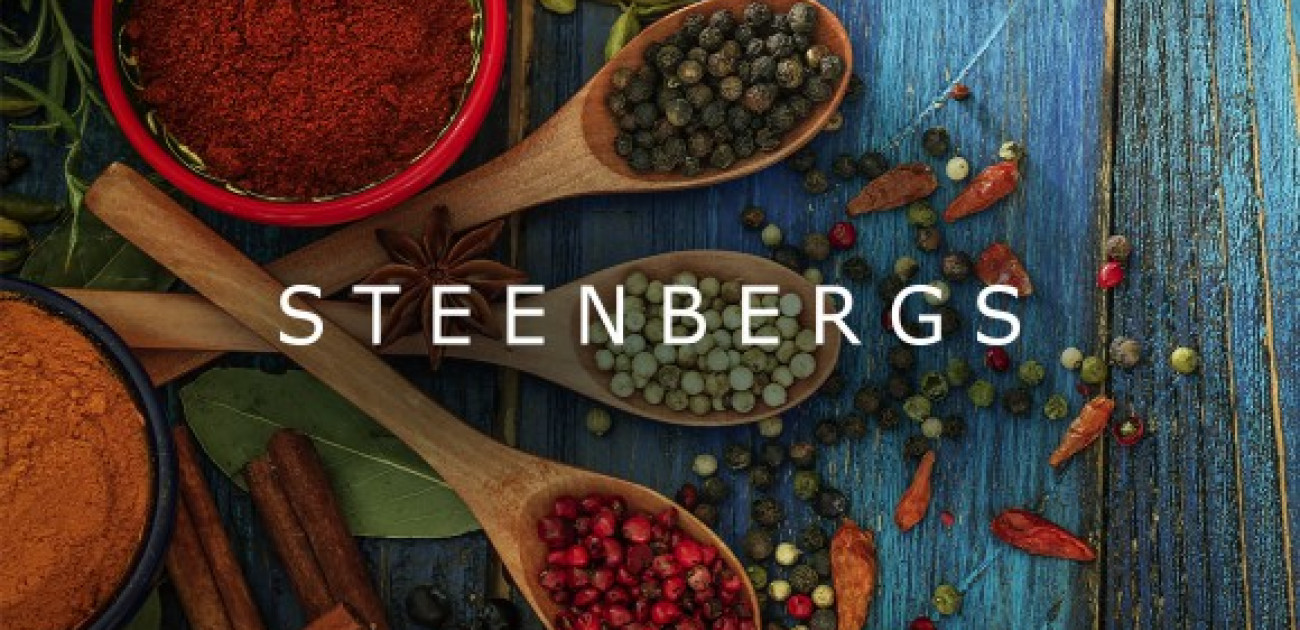15 April 2016
How Steenbergs Tests For Allergens And Other Nasties

Steenbergs’ story is one of “hunting for the best quality, cleanest cooking flavours you can find, from all round the world bought in the most respectful way possible”.
For us, this means organically farmed, fairly traded and from suppliers that have been certified by food safety and quality schemes (ideally, BRC or ISO 22000), and food that respects your desire for junk-free ingredients – no allergens, no chemicals, no harm to nature, no “heads or tails”, no messing with employees, no disrespect of suppliers and no lies.
That’s all a given. We test for microbial contaminants and chemicals from microbial chemicals or other contamination – mycotoxins, ochratoxins, polycyclic aromatic hydrocarbons, chlorates and perchlorates. Today, for example, I have been testing a sample of packed products for water activity levels to check these are in the expected range.
But most enquiries that we get are about allergens. That’s a more complicated answer.
Firstly, we process and store allergens separately from standard ingredients, using clean and dedicated equipment for allergens.
Secondly, we buy from suppliers who say that they follow allergen segregation procedures, and are BRC or ISO 22000 (as above).
Thirdly, we have internal and external testing programmes that check for: the presence of allergens on our equipment or in the building; and the presence of allergens in our packed products. We use test kits for gluten (GlutenTox Pro) and for mustard, peanuts, sesame, treenuts and (less regularly) milk and soy (Neogen). External testing of packed products and (also) of our equipment for allergen proteins or DNA is done by Eurofins and Neogen Laboratories.
Unfortunately because of the way of our products are grown, it is simply not possible to be absolutely certain that allergens don’t get into the supply chain somewhere, somehow – whether growing alongside our spices and herbs or processed in the same factories at origin. So we don’t pretend that they could never be there, but we do our best to make sure our products are as clean as possible for you.
We also get asked about potential other contaminants – agrochemicals, colours and radiation.
Almost all our ingredients are organic and so there’s a legal chain of custody that proves our spices to be organic. For both organic and non-organic products, we then get pesticide residue tests of the raw materials to check they meet EU requirements. Then, we have a testing programme for packed products covering: heavy metals (arsenic, chromium, lead and mercury), illegal colours, pesticides and radiation.
We accept it’s not fool-proof but we’re getting there.
Overall, we take the integrity of our ingredients very seriously indeed and are constantly fussing about how to prove to ourselves that our products are as pure as pure can be, and that no one in our supply chain is duping us.
Notes (for those who want more detail):
Here’s a detailed overview of our testing programme:
Allergen, chemical and physical contaminant testing procedures
| Test | Provider | Rationale |
| Internal tests | Done on randomly selected packed products regularly throughout year | |
| Gluten | GlutenTox Pro | Breadcrumbs: cross-contamination because of poor segregation and clean-down procedures |
| Internal tests | Monthly programme of environmental swabs to test for contaminants in production and changing areas | |
| Allergens | 3M Clean-Trace (Allergen) Swabs | Cleaning: checks efficiency of clean down for down to 3µg of protein on surfaces |
| Gluten | GlutenTox Pro gliadin swabs | Breadcrumbs: cross-contamination because of poor segregation and clean-down procedures |
| Milk | Neogen lateral flow test kits | Not onsite: cross-contamination from outside |
| Mustard | Neogen lateral flow test kits | Mustard: cross-contamination because of poor segregation and clean-down procedures |
| Peanut | Neogen lateral flow test kits | Not onsite: cross-contamination from outside |
| Sesame | Neogen lateral flow test kits | Sesame, zaatar: cross-contamination because of poor segregation and clean-down procedures |
| Soy | Neogen lateral flow test kits | Not onsite: cross-contamination from outside |
| Treenuts (Almond, cashew, hazelnut, pecan, pistachio, walnut) | Neogen lateral flow test kits | Not onsite: cross-contamination from outside |
| External tests | Done on randomly selected packed products throughout year | |
| Allergens (Elisa) | Intertek Stoke; Neogen | Foodsafe, labelling, authenticity (incl. vegetarian) |
| Allergens (DNA) | Eurofins | Foodsafe, labelling, authenticity |
| Chlorates; perchlorates | Eurofins | Foodsafe, authenticity (organic) |
| Colours (Illegal dyes) | Eurofins; Northern Hygiene (Staffordshire Scientific Services) | Authenticity (organic), foodsafe |
| Ethylene oxide | Northern Hygiene (Staffordshire Scientific Services) | Foodsafe, authenticity (organic) |
| Heavy metals | Northern Hygiene (Staffordshire Scientific Services) | Foodsafe |
| Fish and meat | Eurofins (DNA); Neogen | Authenticity (halal, kosher, vegetarian) |
| Mycotoxins | Northern Hygiene (Staffordshire Scientific Services) | Foodsafe |
| PAH (polycyclic aromatic hydrocarbons) | Eurofins | Foodsafe |
| Pesticides | Eurofins; Northern Hygiene (Staffordshire Scientific Services) | Authenticity (organic), foodsafe |
| Radiation | Eurofins | Authenticity (organic) |




